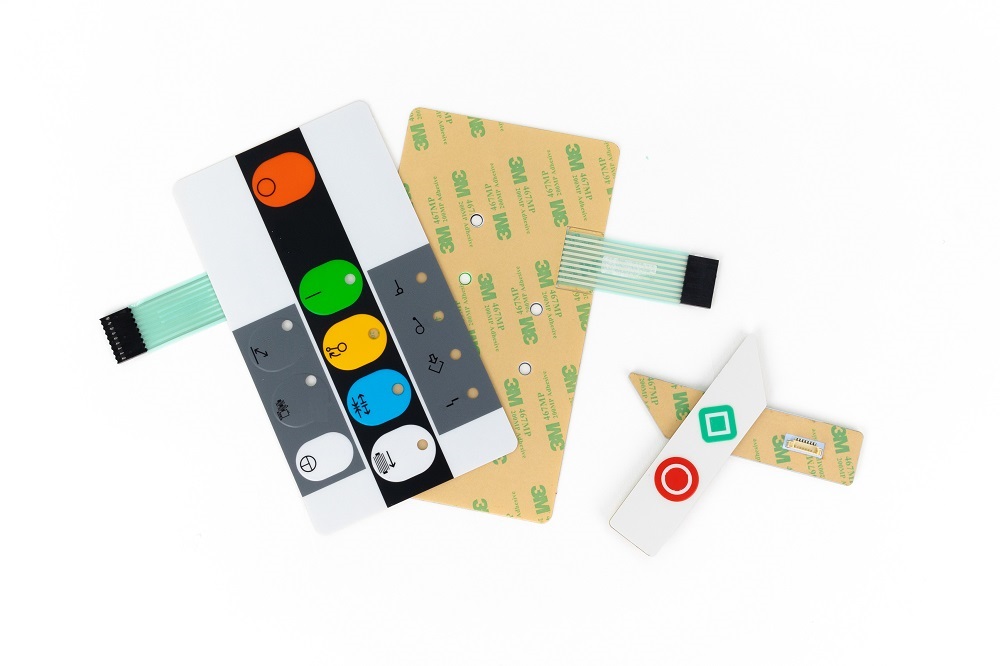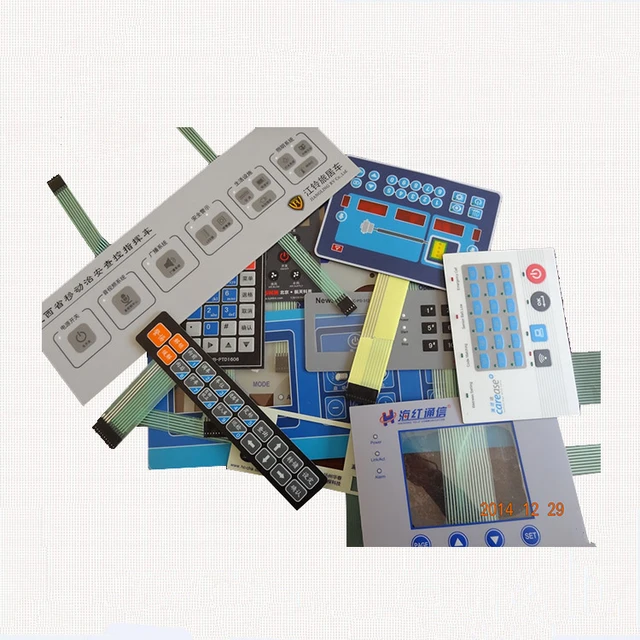How Membrane Switch Technology is Revolutionizing User Interfaces
How Membrane Switch Technology is Revolutionizing User Interfaces
Blog Article
Recognizing Membrane Switches: The Key to Reputable and resilient Controls

What Are Membrane Layer Switches?
Membrane layer switches are an advanced solution in the realm of user interface technology, integrating performance and style perfectly. These devices serve as a user interface between users and digital systems, integrating several components right into a compact format. Generally built from adaptable, thin layers of products, membrane layer buttons are designed to react to touch, enabling individuals to engage with machinery and digital gadgets successfully.
The main components of a membrane layer button consist of a published circuit layer, visuals overlay, and a spacer layer that avoids unintentional activation. The graphic overlay can be tailored to show brand identity or customer choices, enhancing visual appeals while guaranteeing use. Membrane buttons are generally utilized in numerous applications, including medical gadgets, customer electronics, and industrial tools, owing to their durability and resistance to ecological elements such as wetness and dust.
One of the vital advantages of membrane layer buttons is their capability to endure deterioration, making them ideal for high-traffic environments. Furthermore, they are lightweight and require very little area, enabling for innovative layouts in item growth. Overall, membrane layer changes represent a sensible and efficient option for modern-day electronic interfaces, weding modern technology with user-centric layout principles.
Just How Membrane Layer Switches Job
The procedure of membrane changes joints on a simple yet efficient device that equates customer input into electronic signals. When a customer presses the switch, the leading layer deforms, enabling a conductive element in the circuit layer to make call with an equivalent conductive pad on the underside of the visuals overlay.
The style of membrane layer buttons can vary, yet they typically integrate domes or responsive aspects to offer responses to the individual, boosting the general experience - membrane switch. The materials made use of in membrane switches, such as polyester or polycarbonate, add to their resilience and resistance to ecological elements, consisting of wetness and dust. In addition, the published circuits are normally enveloped, which protects them from wear and tear with time.
Advantages of Membrane Buttons

In addition, membrane buttons are recognized for their resilience. Built from durable materials, they are immune to dirt, dampness, and physical wear, which considerably prolongs their life expectancy contrasted to conventional mechanical buttons. This durability makes them particularly appropriate for high-traffic settings and applications calling for durability.
An additional considerable advantage is the convenience of cleaning and upkeep. The smooth surface of membrane switches over reduces dust buildup and is commonly unsusceptible spills, making them excellent here are the findings for setups that require regular sanitization.
Additionally, membrane buttons offer a structured profile, leading to a thinner style that can be integrated right into various tools without including bulk. This function not just enhances the aesthetic charm but additionally adds to a much more ergonomic item style.
Applications of Membrane Switches
Flexible and user-friendly, membrane layer buttons locate applications across a vast variety of sectors, consisting of clinical gadgets, consumer electronic devices, and industrial tools. In the medical field, these switches are important to gadgets such as analysis equipment, client surveillance systems, and mixture pumps, where reliability and convenience of cleansing are important. Their capacity to preserve and stand up to rough environments capability makes them excellent for such applications.

In consumer electronics, membrane switches are used in products like microwaves, washing machines, and remotes - membrane switch. Their sleek layout enables user-friendly interface, improving the overall customer experience while providing longevity and resistance to deterioration
Commercial devices additionally try here benefits from membrane layer buttons, particularly in control panels for equipment and automation systems. These buttons supply protection versus dirt and moisture, making certain constant efficiency in challenging environments. In addition, their personalized functions allow suppliers to customize them to specific functional needs, improving performance and functionality.
Selecting the Right Membrane Change
When picking a membrane button, it is vital to take into consideration various elements that influence efficiency and suitability for specific applications. The key considerations consist of environmental conditions, tactile comments, durability, and design specifications.
First, examine the operating environment; switches subjected to wetness, chemicals, or severe check these guys out temperatures need specific products to ensure long life and capability. Next off, examine the need for responsive comments. Relying on individual communication, some applications might take advantage of a responsive response to confirm activation, while others may choose a non-tactile design for visual factors.
Durability is an additional critical element; membrane layer switches need to be designed to withstand frequent use, effects, and abrasion. Make sure the chosen switch can withstand the anticipated lifecycle, particularly in high-usage circumstances.

Conclusion
Finally, membrane switches over function as important parts in the style of trusted and sturdy control systems throughout numerous sectors. Their small design, combined with durable building and construction and customizable functions, boosts individual communication while ensuring longevity in requiring settings. The adaptability of membrane switches permits for tailored remedies that fulfill details operational demands, reinforcing their significance in modern technology. As sectors remain to advance, the importance of integrating reliable membrane button remedies can not be overstated.
Membrane layer changes stand for a crucial facet of contemporary user interface design, blending capability with strength in various applications.Membrane layer switches are an advanced service in the world of customer interface technology, combining performance and layout perfectly. Commonly created from adaptable, slim layers of products, membrane layer buttons are developed to react to touch, enabling users to interact with machinery and electronic devices properly.
The design of membrane switches can differ, but they commonly integrate domes or tactile elements to provide responses to the user, improving the general experience.In verdict, membrane layer switches offer as important parts in the style of sturdy and reliable control systems across numerous markets.
Report this page